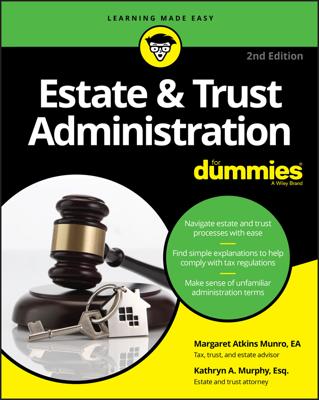An estate’s administrator must complete Schedule A: Real Estate when filing Form 706, United States Estate (and Generation-Skipping Transfer) Tax Return if a probate estate contains any real estate or interest in real estate. Include all the necessary information for the real estate you report on this schedule. Pay special attention to real estate that the decedent had contracted to sell. Get help from a professional when using Schedule A-1.
Include all real estate owned solely in the decedent’s name. Real estate held as tenants in common, where each tenant’s interest in the property is separate from the interests of the other tenants in common and passes to his or her heirs upon death, should also be reported on this schedule. Include the following information for each piece of real estate you report on Schedule A:
Land area
Any improvements such as house and lot
Street address
The legal description (the description on the deed)
Any accrued rent: Any rent earned prior to the decedent’s death but not paid until after the date of death
The appraisal or other basis for valuing the property: Describe the appraisal and attach a copy as an exhibit at the end of the return. If the assessed value reflects the market value in the area, the IRS may accept the assessed value in lieu of an appraisal. Attach a copy of the tax assessment closest to the decedent’s date of death as an exhibit.
If the property is sold shortly after the decedent’s death, the selling price may be used. Attach copies of the sales contract and closing statement as exhibits. Note that the IRS does not have to accept a sale price as the fair market value price.
If the decedent owned a fractional interest in real estate which you or your appraiser are discounting, attach as an exhibit a statement explaining the discount taken on the interest. Be sure the appraiser can defend the discount if the return is audited.
If the decedent was liable for a mortgage on the property, report the mortgage in the property description but include the full value of the property on this schedule and deduct the mortgage on Schedule K. If a mortgage is chargeable against the property, deduct the mortgage from the amount reportable on this schedule.
Include all real estate that the decedent had contracted to sell. If the contract is a purchase and sale agreement, and you cancelled it after the decedent’s death and re-executed it as executor, report the real estate at its full value on Schedule A. You will receive a step-up in cost basis before the sale.
If you did not cancel this contract after the decedent’s death, you should report the contract on Schedule C, not on Schedule A.
If the decedent was selling property under a land contract, report the property on Schedule A, and refer to the land contract. List all jointly held real estate on Schedule E (not on Schedule A). List real estate held as part of a sole proprietorship on Schedule F (not on Schedule A).
If you elect special use valuation under section 2032A, you are valuing real estate used in the operation of a farm or business at its farm or business use rather than its fair market value. To do this, you must complete Schedule A-1: Section 2032A Valuation in addition to Schedule A. This is extremely difficult, so consult a qualified professional to complete this schedule.

